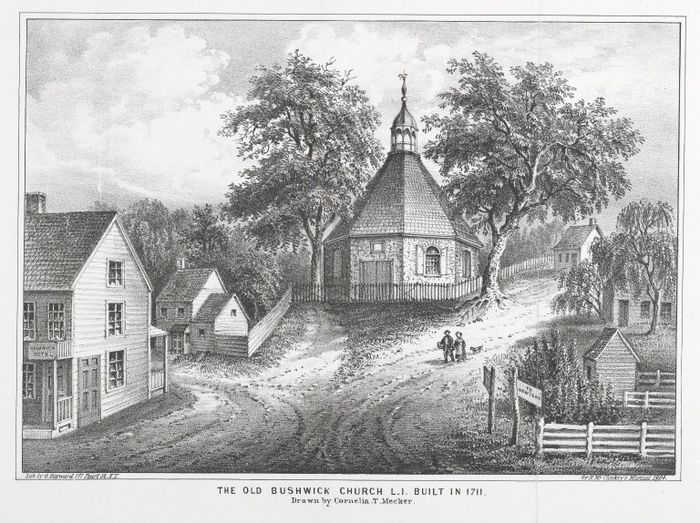Annotation:Bushwick Reel: Difference between revisions
No edit summary |
No edit summary |
||
| (One intermediate revision by the same user not shown) | |||
| Line 2: | Line 2: | ||
{{TuneAnnotation | {{TuneAnnotation | ||
|f_tune_annotation_title= https://tunearch.org/wiki/Annotation:Bushwick_Reel > | |f_tune_annotation_title= https://tunearch.org/wiki/Annotation:Bushwick_Reel > | ||
|f_annotation='''BUSHWICK REEL.''' American, Reel (2/4 time). B Flat Major. Standard tuning (fiddle). AB (Higgins): AABB (Coes). "Bushwick Reel" was an original composition by New York fiddler Michael Higgins and published in his collection of 1829. Forty-Five years later the reel was printed by George H. Coes who attributed it to blackface minstrel fiddler [[biography:Zeke Backus]]. | |f_annotation=[[File:Bushwick1.jpg|right|700px|thumb|]]'''BUSHWICK REEL.''' American, Reel (2/4 time). B Flat Major. Standard tuning (fiddle). AB (Higgins): AABB (Coes). "Bushwick Reel" was an original composition by New York fiddler Michael Higgins and published in his collection of 1829. Forty-Five years later the reel was printed by George H. Coes who attributed it to blackface minstrel fiddler [[biography:Zeke Backus]]. | ||
<br> | <br> | ||
<br> | <br> | ||
Latest revision as of 15:36, 25 March 2021
X:1 T:Bushwick Reel M:2/4 L:1/8 R:Reel C:M. Higgins B:Original Dances, Waltzes & Hornpipes for the Violin (1829, p. 4) B:Composed by M. Higgins. New York. Published by Firth & Hall, 1 Franklin Sq. Z:AK/Fiddler’s Companion K:Bb d/e/|f/g/f/g/ fb|f/g/f/g/ fb|d/f/b/f/ c/f/a/f/|d/b/a/g/ f/e/d/e/| f/g/f/g/ fb|f/g/f/g/ fb|d/f/b/f/ c/f/a/f/|bf/d/ B|| F/E/|D/F/F B/F/d/F/|C/F/F A/F/c/F/|D/F/B/F/ C/F/A/F/|D/F/B/d/ c/A/F/E/| D/F/F B/F/d/F/|C/F/F A/F/c/F/|D/F/B/D/ C/F/A/c/|BdB!D.C.!||

Bushwick was originally settled by the Dutch, joined later by Scandinavian, French and English farmers who produced food and tobacco for themselves and New York markets, sometimes with the assistance of slave labor. King's County (Brooklyn) was the largest slave holding county in the North, not abolished until 1827, just a few years before Higgins' publication. Dutch was the daily language until the 19th century, and Dutch and English were taught in the schools from 1758 to 1800, before giving way to English. In Higgins' time it was still rural, and before a large influx of German and Austrian immigrants that began in the 1840's.

